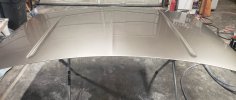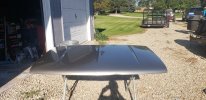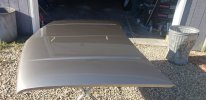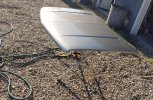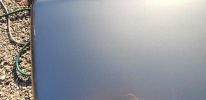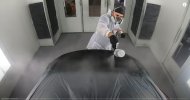Creativename
Promoted Users
This is my second time redoing a hood off of a 99 suburban. The paint code is WA382E and It's omni plus with mr186, I'm using a ws 400 evo 1.3 at 29psi, and It was 70-80 degrees both times. I'm about 3-3.25 turns in on the fluid, the fan was open, and the pattern looked fine when I tested it. I gave it 10 minutes flash time between coats and it wasn't heavy at all. When I tried a drop coat it just looked kind of blotchy and cross hatch didn't seem to really affect it.
I feel like I'm beating my head against a wall with this. I talked to the paint store about it and they didn't really have an answer for me.
I feel like I'm beating my head against a wall with this. I talked to the paint store about it and they didn't really have an answer for me.

